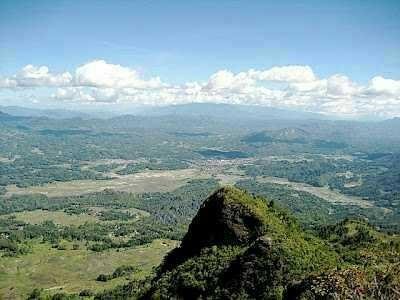
Mount sesean (about 2100 meters above sea level) is located in Tana Toraja, South Sulawesi, Indonesia. precisely in Sesean sub-district, North Toraja District (now Tana Toraja is divided into 2 districts). still keep the mystery. The ritual of raising the corpse that became the tradition of its inhabitants is still a contradiction. Have you ever seen how the rituals of local people raised corpses from the cemetery. Toraja Tana is a regency area located about 350 KM north of the capital of South Sulawesi province, Makassar. To get to this area, you can travel either by land or air. From Sultan Hasanuddin Airport Makassar to Toraja approximately 45 minutes, while by landline will take about 8 hours from Makassar.
Tana Toraja has uniqueness and culture that is very rare in Indonesia
Toraja is a tribe that settled in the northern mountains of South Sulawesi, Indonesia. Its population is estimated at about 1 million people and some people still adheres to animism beliefs known as Aluk To Dolo belief. The Indonesian government has recognized this belief as part of the Hindu Dharma Religion. Toraja tribe is also still thick with their cultures and spiritual stories.
That said, in a Silanang village, Tana Toraja district, found a mass grave. The mass grave is located in a cave, and locals say that the corpses stored there never decay and smell. The bodies were not given special treatment like the embalming process on the ancient Egyptian mummy. According to some studies, this is because there is a kind of substance from the tree there that can absorb the stench and also away from the insects that cause the corpse quickly rot.
In addition to the miraculous tomb, there is also a story of a walking corpse controlled by a handler. The corpse is said to be walking like a living person, only the way it goes a bit stumbling. The corpse was controlled for the purpose of guiding it back to its final destination, its own home. Told the Toraja people love to explore the mountains. They do not use any means of transportation when exploring. In the heavy explorations, some people are not strong enough to continue and fall ill. Because the provisions and medicines are very minimal, their sick members eventually died.
Because it is impossible to leave the bodies of their co-workers, and it would be very inconvenient to restore the corpse, and with magical rituals, they raised the corpse and controlled it. They guided the corpse to his home. There is a taboo to do before the corpse gets to the house, corpses should not be touched, if touched, then the spell will be lost.
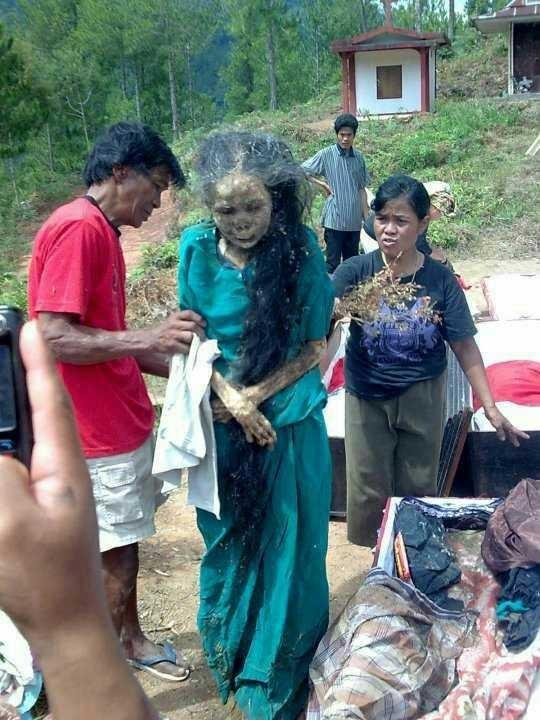
However, from all the articles containing news about this story, we only found a photo showing someone holding the hand of a person suspected to have died. The picture is indeed creepy, but strangely not many photos are circulating on the internet about the story of this walking corpse.
If indeed this corpse really exists, could it be available on the internet even more, or is there a rule that it should not be immortalized through photographs? Or is there any other reason? Actually, we also can not guarantee whether this story is HOAX or indeed this is a true occult activity occurs.
Walking Dead Zombie in Real World
Tana Toraja death ceremony
Tana Toraja has a complicated funeral tradition. The ceremony, called Rambu Solo, is a customary funeral ceremony which requires the family to hold a party as a final tribute to the dead.
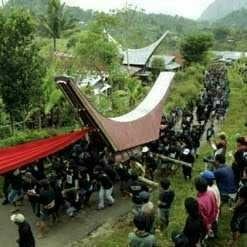
Solo Rambu ceremony is said to be a complicated ceremony because it has a number of levels in accordance with the social status of the deceased and his family. Usually the corpse was also accompanied by a statue depicting the deceased's face. This statue is called Tau-Tau. Then, at the last procession, the corpse was taken to the cliff and placed on the cliff wall just like that. And miraculously, like a piece of the story above, the corpse laid on the wall did not emit a foul odor.
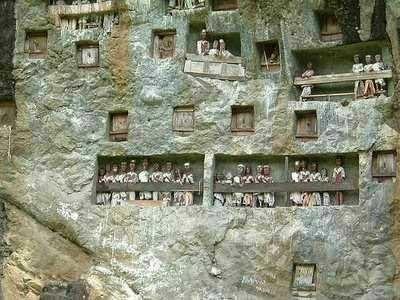
According to the teachings of Aluk Todolo (local community trust), Toraja custom house named Tongkonan it has a special meaning. According to them, the living and the dead are the same. If the surviving people gather in their home, the Tongkonan, then those who have died gathered in a special place made as a "couple" Tongkonan Liang.
Ma Nene, Unique Ritual of the Toraja Tribe
Ma'nene, tradition of replacing new clothes on corpses
Tana Toraja in South Sulawesi has long been famous for its beautiful mountainous mountains and unique custom rituals. The most famous, of course, the Soloyang Raid party that was held ahead of the cemetery of a respected figure. Every year a party that is taking place in several places in Toraja is always looking forward to the arrival of tourists.
In addition to Rambu Solo, there is actually a rare custom rare nan in Toraja, namely Ma Nene, the ritual of cleaning and changing the clothes of ancestral bodies. This ritual is known only to the people of Baruppu in the interior of North Toraja a new district. Normally, Ma Nene is held every August. When Ma Nene takes place, ancestral matrix chests, figures and parents are removed from the graves and burrows and placed in the ceremonial arena. There, relatives and relatives have gathered. Gradually, they remove the corpse (both intact and bone-dwelling) and replace the clothing attached to the body with a new one.
They treat the corpse as if it were still alive and remain a part of the extended family. Ma Nene's ritual by the people of Baruppudianggapanggap as a form of their love of the ancestors, figures and relatives who have died. They keep hoping, the ancestral spirits keep them from nasty disorders, plant pests, as well as bad luck. Where is the origin of the Ma Nene ritual in Baruppu? The hereditary story mentions, in ancient times there was an animal hunter named Pong Rumasek. While hunting in the mountainous region of Balla, instead of finding a forest animal, he even found the body of a long-dead person. The corpse was lying under the trees, abandoned, living bones. Feeling sorry, Pong Rumasek then took care of the corpse as much as he could. He wrapped the bones with the clothes he wore, then placed in a roomy and feasible area. After that, Pong Rumasek continued his hunt. No warning, since the incident, whenever Pong Rumasek hunts, he always gets great results. The forest animals are being led to him. Not only that, when he got home, Pong Rumasek found the rice plant in his rice field was already yellow, nazy and ready to harvest before the time.
Pong Rumasek assume, all the luck was obtained thanks to the compassion he showed when treating unnamed corpses that he found during hunting. , Pong Rumasek and the people of Baruppu glorify the corpses of the ancestors, figures and relatives with Ma Nene ceremony. In Ma Nene ritual there is also an unbounded rule that binds the citizens. For example, if a wife or husband dies, then the spouses left should not marry again before holding Ma Nene for her.
When Ma Nene was held, the origin of Baruppu migrants scattered throughout the country will return home in honor of their ancestors. Residents Baruppu believe, if Ma Nene is not held then the ancestors will also miss them. Disasters will strike, disease will befall the citizens, fields and gardens will not produce padi and fertile plants.
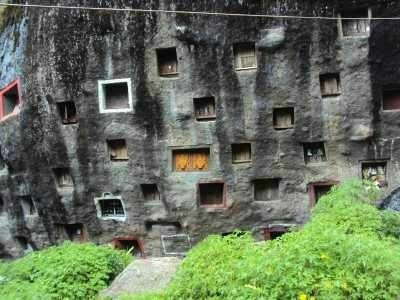
If you want to visit megalith stone complex, then visit to Bori 'which is still in Sesean area. This was the first place we visited on the last day before we returned to Makassar in the evening. Here there are 102 megaliths or menhirs.
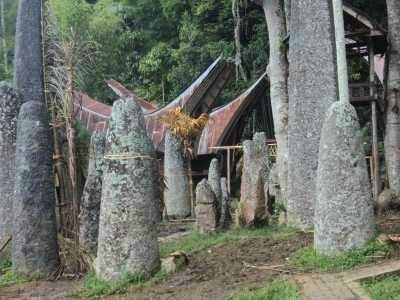
This megalith complex seems less well maintained. Lots of animal waste around the menhirs. The sign board had collapsed when we went inside.
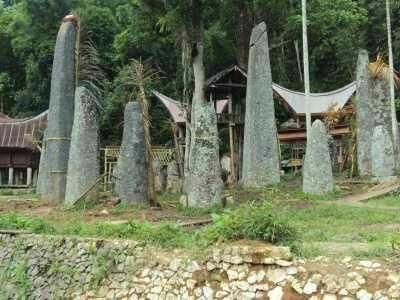
If walking goes inside, we will see a grave carved in stone. The unique of the cemetery is the stone. The stone used to store corpses is a natural stone and sizeable. One stone there are several graves and usually one family buried in the same stone from the noble grandmother to the offspring of his descendants.
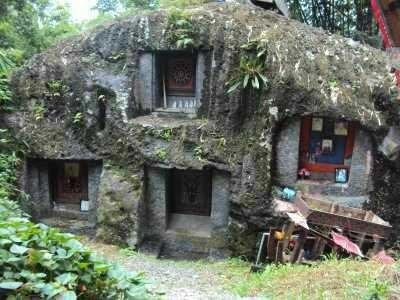
There is also Baby Grave (burial baby) buried in a tree. The baby who died before his teeth grew in a grave in the Tarra tree. Tarra tree 'is used as a cemetery because this tree has a lot of sap that is considered as a substitute for breast milk. And the people of Toraja consider it as if the baby was returned to her mother's womb. And expecting the return of a baby to her mother's womb will save the babies born later. Tarra Tree 'which is used as a cemetery with diameter 80-100 babies cm even up to 300 cm. The buried baby is not wrapped in cloth like a baby in the womb and then covered with a palm tree palm. This cemetery is only done by Toraja people of Aluk Todolo (belief to the ancestors). After tens of years the baby will merge with the tree.
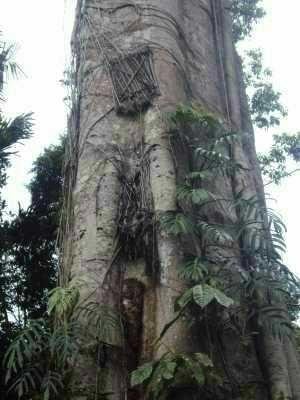
Thanks for reading The mystery of a tribe controls a corpse in Tana Toraja, Indonesia
Sir, your 📮post is 👍good
Sir, please see my profile
Sir, I am new
Downvoting a post can decrease pending rewards and make it less visible. Common reasons:
Submit
This story is really still there in Sulawesi
Downvoting a post can decrease pending rewards and make it less visible. Common reasons:
Submit
Postingan yang bermanfaat
Downvoting a post can decrease pending rewards and make it less visible. Common reasons:
Submit